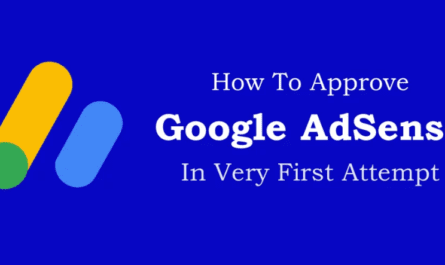Learn how to create a free SEO optimized landing page with our step-by-step guide. Start driving traffic now!
Introduction
In today’s digital landscape, having an effective landing page is crucial for any online business. A landing page serves as a powerful tool to attract potential customers, generate leads, and drive conversions. And if you want your landing page to be successful, optimizing it for search engines is equally important. In this step-by-step guide, we will walk you through the process of creating a free landing page that is SEO optimized. Let’s dive in!
Understanding Landing Pages
Before we delve into the details of creating an SEO optimized landing page, let’s first understand what a landing page is. In simple terms, a landing page is a standalone web page designed with a specific goal in mind, such as promoting a product, capturing leads, or encouraging sign-ups. Unlike regular website pages, landing pages are focused and streamlined, driving visitors towards a desired action.
Importance of SEO in Landing Pages
Search engine optimization (SEO) plays a pivotal role in the success of your landing page. By optimizing your landing page for relevant keywords, you can increase its visibility in search engine results pages (SERPs), attract organic traffic, and improve your chances of converting visitors into customers. SEO helps you rank higher, drive targeted traffic, and ultimately boost your conversion rates.
Step 1: Choosing a Landing Page Builder
The first step in creating a free landing page is selecting a reliable landing page builder. There are numerous options available, each offering different features and capabilities. Look for a builder that is user-friendly, provides customizable templates, and allows for easy integration with your existing website or marketing tools.
Step 2: Selecting a Template
Once you’ve chosen a landing page builder, it’s time to select a template that aligns with your goals and target audience. Consider the aesthetics, layout, and overall design of the template. Opt for a clean and professional look that is visually appealing and easy to navigate. Remember, the template should complement your content and highlight your unique selling points.
Step 3: Customizing the Design
Customizing the design of your landing page is crucial to make it stand out and reflect your brand identity. Tailor the colors, fonts, and imagery to match your branding. Ensure that the design elements are consistent, visually appealing, and align with your overall marketing strategy. A visually appealing landing page can captivate visitors and encourage them to take the desired action.
Step 4: Adding Compelling Content
Compelling content is the backbone of any successful landing page. Write persuasive and engaging copy that clearly communicates the value proposition of your product or service. Use concise and benefit-driven language to capture the attention of your visitors. Focus on the unique features, benefits, and solutions your offering provides. Remember to keep the content simple, straightforward, and easy to understand.
Step 5: Optimizing for SEO
To make your landing page SEO optimized, it’s essential to optimize various elements for search engines. Here are some key optimization tips:
- Keyword Research: Conduct thorough keyword research to identify relevant keywords and phrases that align with your landing page’s purpose. Use tools like Google Keyword Planner or SEMrush to find high-ranking keywords with moderate competition.
- Title Tag and Meta Description: Craft a compelling and keyword-rich title tag and meta description. The title tag should be concise and descriptive, while the meta description should provide a brief overview of your landing page’s content.
- URL Structure: Create a clean and SEO-friendly URL structure that includes relevant keywords. Avoid using complex or lengthy URLs, as they can be challenging for search engines and users to understand.
- Header Tags: Utilize header tags (H1, H2, H3, etc.) to structure your content and highlight important sections. Incorporate relevant keywords naturally within these header tags to improve search engine visibility.
- Optimized Content: Ensure your landing page content is informative, engaging, and optimized for your target keywords. Use subheadings (H2, H3, etc.) to break up the text and make it easier to read. Incorporate keywords naturally throughout the content while maintaining readability.
- Image Optimization: Optimize images by using descriptive alt tags that include relevant keywords. Compress the images to reduce page load time and enhance user experience.
- Internal and External Links: Include internal links to relevant pages on your website to improve navigation and provide additional value to visitors. Also, consider adding external links to credible sources that support your claims or provide further information.
Step 6: Adding Relevant Images and Videos
Visual content, such as images and videos, can significantly enhance the effectiveness of your landing page. Use high-quality images that resonate with your target audience and support your message. Incorporate videos that provide demonstrations, testimonials, or explain complex concepts. Remember to optimize these visual elements for faster loading times and include relevant alt tags and captions.
Step 7: Including Clear Call-to-Action
A strong and prominent call-to-action (CTA) is vital for driving conversions. Place a clear and compelling CTA button on your landing page, guiding visitors towards the desired action. Use action-oriented language that creates a sense of urgency, such as “Get Started Now” or “Claim Your Free Trial Today.”
Step 8: Testing and Analyzing
Testing and analyzing your landing page’s performance are crucial to optimize its effectiveness. Conduct A/B tests to compare different elements such as headlines, CTAs, colors, or layouts. Use analytics tools like Google Analytics to track visitor behavior, conversion rates, and other key metrics. Based on the data collected, make data-driven adjustments to improve your landing page’s performance.
Step 9: Publishing and Sharing
Once you’re satisfied with the design, content, and optimization of your landing page, it’s time to publish and share it with your target audience. Integrate your landing page into your website, share it on social media platforms, and include it in your email marketing campaigns. Leverage different channels to maximize visibility and reach.
Conclusion
Creating a free landing page that is SEO optimized requires careful planning, attention to detail, and a deep understanding of your target audience. By following the step-by-step guide outlined above, you can develop a high-performing landing page that attracts organic traffic, engages visitors, and drives conversions. Remember to continuously monitor and optimize your landing page based on data-driven insights to achieve long-term success.
FAQs
- What is a landing page? A landing page is a standalone web page designed with a specific goal in mind, such as promoting a product or capturing leads. It is separate from a website’s main navigation and is focused on driving visitors to take a desired action.
- How does SEO benefit a landing page? SEO helps optimize a landing page for search engines, increasing its visibility and organic traffic. By incorporating relevant keywords, optimizing meta tags, and structuring content with header tags, SEO improves the chances of the landing page ranking higher in search engine results.
- Can I create a free landing page without technical skills? Yes, there are various user-friendly landing page builders available that allow you to create professional-looking landing pages without requiring extensive technical knowledge. These builders provide pre-designed templates and drag-and-drop functionality, making it easy for anyone to create a visually appealing landing page.
- How important is the design of a landing page? The design of a landing page is crucial as it influences user experience and engagement. A well-designed landing page with a clean layout, visually appealing elements, and easy navigation can captivate visitors and increase the likelihood of them taking the desired action. It is important to align the design with your brand identity and create a visually consistent experience for users.
- How long does it take for a landing page to rank on search engines? The time it takes for a landing page to rank on search engines can vary depending on several factors, including competition, keyword difficulty, and the quality of your SEO efforts. It usually takes time for search engines to crawl and index the page, and ranking improvements may be seen gradually as your SEO strategies take effect. It’s important to focus on consistent optimization, quality content, and building authoritative backlinks to improve your landing page’s visibility over time.



